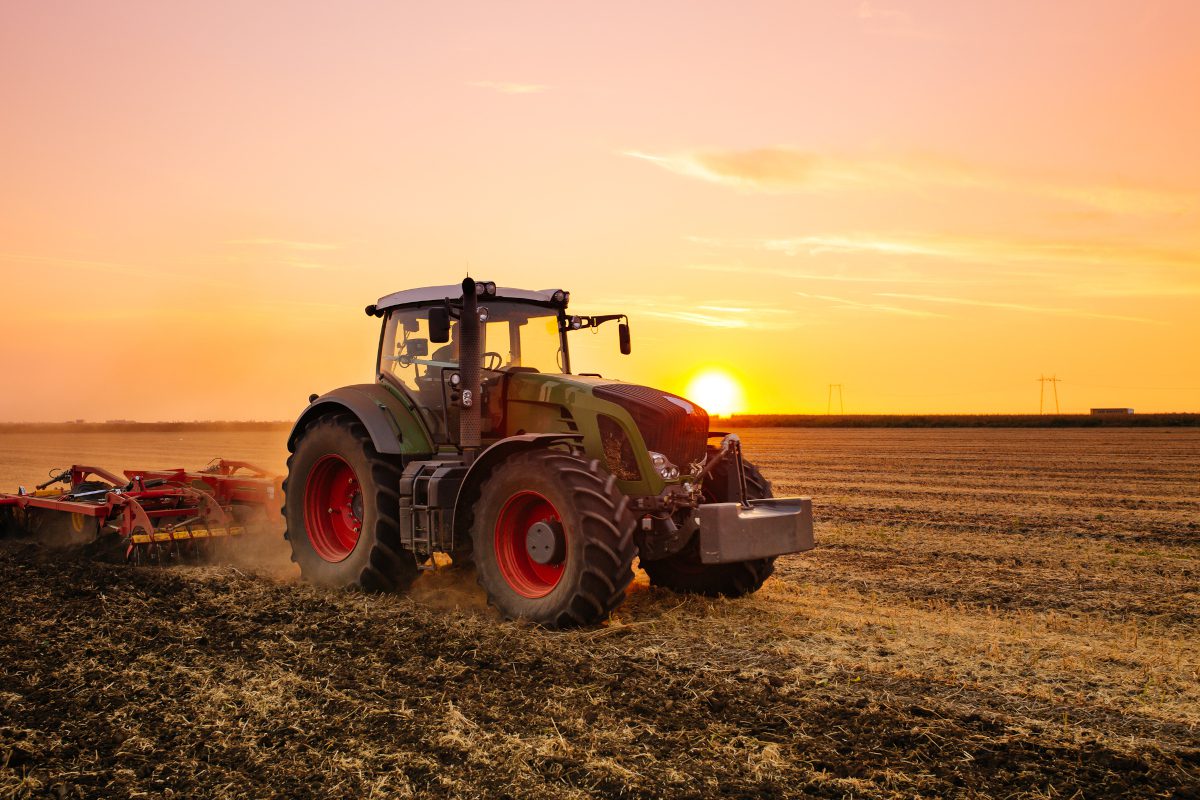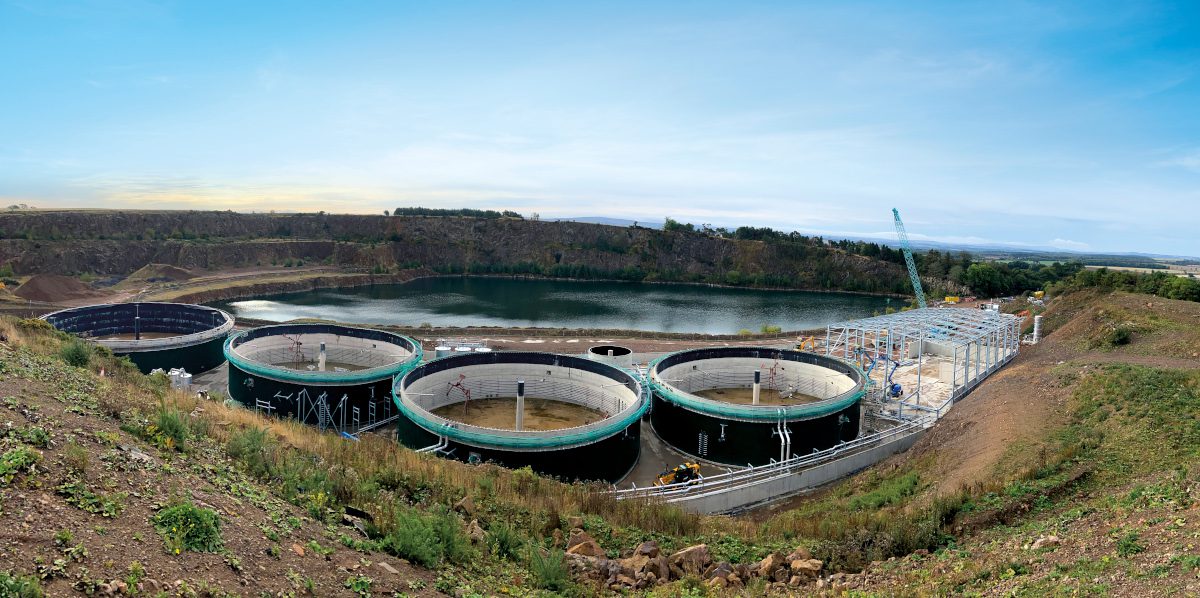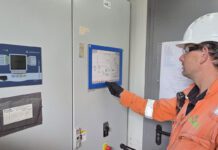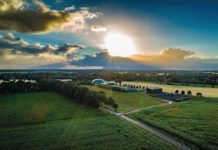
By Marc McElhinney
For today’s modern farmer, sustainability is at the heart of agricultural best practice. But balancing a reduction in carbon emissions with the need for profit isn’t always easy. Farming and renewable energy have gone hand in hand for years, with popular technologies such as solar panels and wind turbines offering farmers a means of diversifying their business while helping the planet. However, another less well-known renewable technology has been quietly making an impact, too. Anaerobic digestion (AD) or biogas plants have grown in popularity in recent years and those accepting agricultural feedstocks (including manures, crop residues and/or bioenergy crops) are now the AD industry’s most common type of plant, with 369 such facilities across the UK.1
With agriculture estimated to have been the source of 48% of the UK’s methane emissions in 2020 – an increase of 1.3% on 20192 – the trend towards on-farm AD is set to continue. Not least because, unlike other renewable energy technologies, biogas offers multiple additional benefits beyond simply green power. Here, we take a look at the seven main benefits of AD to farmers…
What is AD?
Anaerobic digestion is a process whereby organic materials such as energy crops, agricultural residues, manures and food waste are broken down by bacteria in the absence of oxygen, generating biogas (mostly a mixture of methane, carbon dioxide and nitrogen). This biogas can then be used to produce heat and electrical power via a CHP engine or upgraded to biomethane and injected into the gas grid or used to power vehicles, including tractors. The AD process also produces an organic biofertiliser and soil conditioner, called digestate.
What’s in it for farmers?
Benefit #1: Income diversification
Anaerobic digestion provides numerous options for farmers to diversify their income through different streams, including lease payments for project land, long-term feedstock and digestate removal contracts, and free digestate for use on the farm. Innovative models, like those offered by GFD, also offer different options for increased project equity or profit sharing.
Benefit #2: Income stability
As well as diversifying income sources, the revenue generated through AD is regular and stable, helping to offset notoriously volatile incomes from traditional agricultural products. Leasing land for anaerobic digestion, as well as supplying feedstock and receiving energy production payments, can provide long-term, predictable income streams without affecting the overall farm business.
Benefit #3: Slurry and manure management
Slurry and manure represent a significant management issue for livestock farmers as environmental rules become more stringent. Anaerobic digestion provides a unique tool to produce energy from manures and other agricultural wastes, while still providing sustainable biofertiliser in the form of digestate.
Benefit #4: Crop rotation
Biogas production can support new crops in the rotation, improving diversity and boosting crop health. Although livestock wastes are GFD’s preferred feedstocks, in many cases, there are also technical and agronomic advantages to using a proportion of energy crops in the feedstock mix for the digester.
Benefit #5: Soil health
AD offers significant benefits in terms of soil health. Improving crop rotations and using sustainable biological fertiliser in the form of digestate can boost soil organic matter, improve soil and crop health, and increase the potential for soil carbon storage.
Benefit #6: The path to net zero
On-farm AD plants can help reduce a farm’s carbon footprint by preventing emissions from agricultural wastes, slurries and by-products, while digestate can offset emissions from synthetic fertiliser. In addition, using a proportion of the renewable energy produced on site can also help farmers to become net-zero carbon emitters.
Benefit #7: Home-grown heat and power
As energy costs continue to rise, perhaps one of the most significant benefits from having an on-site AD plant is the potential for on-farm use of the renewable energy generated. Depending on configuration, biogas plants can provide farms, rural businesses and households with a reliable supply of electricity, heat or fuel for tractors and other vehicles (or any combination of the three).

Overcoming funding barriers
Until now, most farms wanting to invest in AD technology have faced a stark choice: either invest millions of pounds (often using the farm as collateral) into a biogas plant or enter into a feedstock supply and/or digestate offtake contract. This, together with the fact that most AD developers are looking for sites with good access to electricity or gas grids, has limited uptake of the technology by some farmers – until now.
GFD has partnered with leading European renewables investor SWEN Capital Partners to offer fully funded AD plants to progressive farmers. This means no capital investment from the farmer is required (although an opportunity to invest alongside us also exists for farmers that are interested). And thanks to our novel ‘hub and spoke’ model, being close to a grid connection point is not a requirement either.
Overcoming grid access issues
The beauty of the hub and spoke model is that sites with limited or no viable gas grid connection point can still benefit from on-farm AD. A ‘hub’ is a central AD plant with good gas grid access. We’re currently building a biogas plant at Bangley Quarry in East Lothian, Scotland, which will produce 1,100m3/hr biomethane – enough gas to supply a town the size of neighbouring Haddington, with more than 10,000 residents. We envisage that this will become our first hub.
Spokes are smaller on-farm sites with abundant feedstock and no gas grid access. Surplus biogas from these spokes will be upgraded to biomethane, compressed and transported using low carbon, biomethane-fuelled tankers to the main hub plant for injection into the gas grid.

Is my farm suitable for AD?
With access to funding and grid connection no longer barriers to AD, many more progressive farmers are waking up to the benefits of biogas. If your farm meets the following criteria, then AD could be right for you, too:
- Suitable building site with good access to road networks and no obvious planning concerns.
- Potential feedstock supply, either alone or in partnership with neighbouring farms.
- Potential energy use, either on-site or locally.
- Digestate biofertiliser demand, either alone or in partnership with neighbouring farms.
- Sufficient access to allow delivery of feedstock (if required) and collection of compressed biomethane.
GFD is keen to hear from Scottish farmers or those in the north of England who want to find out more about the low-carbon diversification options of an on-farm biogas plant. For an informal chat, please get in touch at info@gfdl.co.uk or visit www.gfdl.co.uk
Notes
[1] ADBA’s Anaerobic Digestion Policy Report, April 2023
[2] https://www.gov.uk/government/statistics/agri-climate-report-2022/agri-climate-report-2022#:~:text=The%20total%20emissions%20of%20methane,increase%20of%201.3%25%20on%202019.






